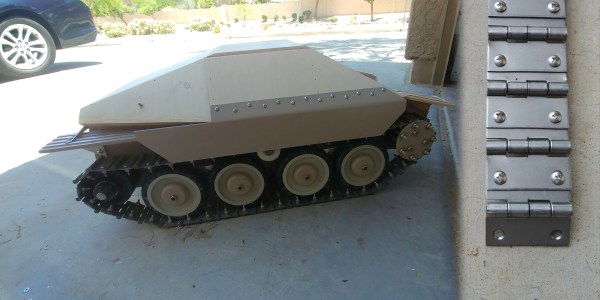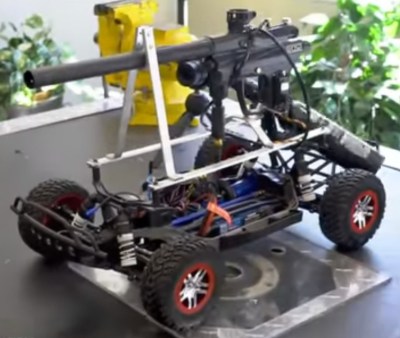Video games, movies, and modern militaries are all full of robotic gun turrets that allow for remotely-controlled carnage. [Paul Junkin] decided to build his own, albeit in a less-destructive paint-hurling fashion.
The turret sits upon a lazy susan bearing mounted atop a aluminium extrusion frame. A large gear is mounted to the bearing allowing the turret to pan when driven by a stepper motor. A pair of pillow block bearings hold a horizontal shaft which mounts the two paint markers, which again is controlled by another stepper motor to move in the tilt axis. An ESP32 microcontroller is responsible for running the show, panning and tilting the platform by commanding the large stepper motors. Firing the paintball markers is achieved with solenoids mounted to the triggers, which cycle fast enough to make the semi-auto markers fire in a way that almost feels like full-auto. Commanding the turret is via an Xbox One controller; communicating with the ESP32 over Bluetooth using the BluePad32 library.
It’s worth noting you shouldn’t shoot paintballs at unsuspecting individuals, since they can do extreme amounts of damage to those not wearing the proper protection. We’ve featured a great many other sentry guns over the years, too, like this impressive Portal-themed build. Video after the break.
Continue reading “A Paintball Turret Controlled Via Xbox Controller”





















